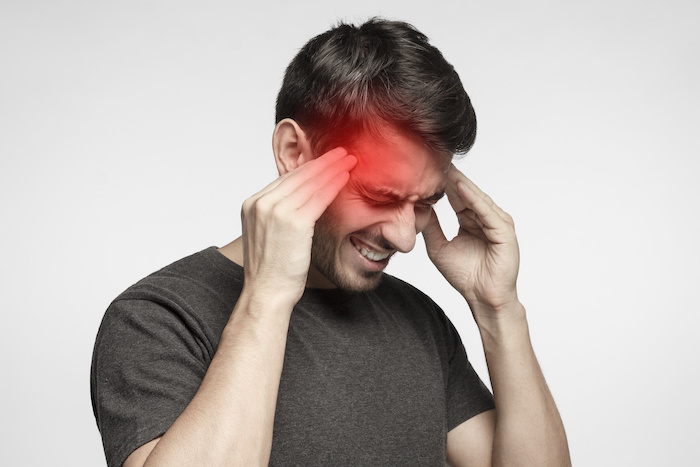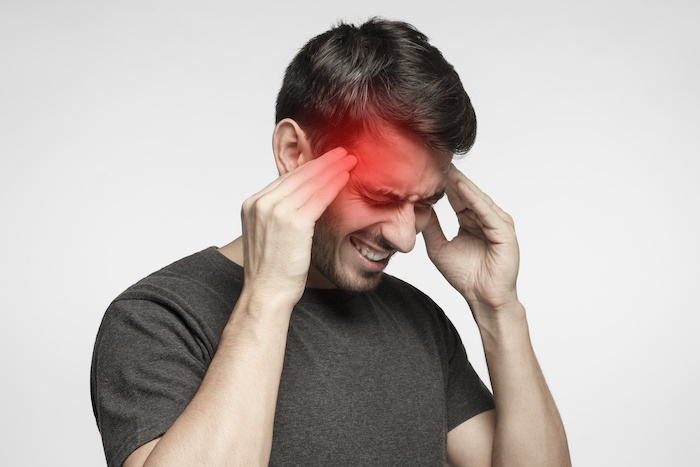Headaches are so common that people just take a pain reliever and don’t even try to find out the root cause of the pain. However, it’s essential to keep in mind that when it comes to physical health, there’s always a reason you’re not feeling your best. And headaches are no exception to this rule.
But how do doctors become more knowledgeable and thus empowered to control any headache that comes along? How do they best treat this type of pain or, better yet, prevent it in the first place? Keep reading to find out what types of headaches can occur and what can trigger them.
1. Sinus headache
Sinus headaches stem from sinus pain and pressure and are usually felt in the front of the head. Doctors often recommend treating these headaches with a neti pot or an over-the-counter pain reliever. It’s also essential to make sure a specialist looks at your sinuses to make sure your headache is actually a sinus headache.
2. Tension headache
Tension headaches are characterized by painful pressure or a tightening sensation around the head, sometimes the entire head! You may also experience tenderness in the scalp, neck, and shoulder muscles. Stress reduction and relaxation techniques like deep breathing, meditation, biofeedback training can help treat tension headaches.
3. Hormone-related headache
Some women develop headaches or migraines at certain times of the month, this can be before, after, or during their periods. Fortunately, this means these headaches are often more predictable than other types of headaches, so it’s a good idea to take preventive measures during those few days of the month and try to pinpoint any triggers.
4. Migraine headache
Migraines are felt as a pulsing or throbbing pain in one or both sides of the head, lights in your vision, great sensitivity to noises and lights, and possible vomiting and nausea. This type of headache is still not well understood. But experts suggest migraine occurs due to an imbalance in certain brain chemicals that might occur due to genetics or the impact of environmental factors. Migraine triggers include hormone changes, certain beverages, stress, sleep changes, medications, food additives, weather changes, among others.
Oftentimes an NSAID can help manage migraines, however, if you have more than one per week, visit your healthcare provider who might be able to prescribe you something stronger.
5. Cluster headache
Cluster headaches are often characterized by stabbing pain in one side of the head and are also often accompanied by sensitivity to light, runny or congested nose, discomfort or a mild burning feeling, one eye tearing up, and sweat on the face. They typically last about 30 minutes, however, they can occur frequently. These are the most difficult types of headaches to predict and treat.
Luckily, there are many ways to treat cluster headaches, including medications (triptans, Dihydroergotamine (DHE 45), octreotide, lidocaine, oxygen), lifestyle changes (regular sleep schedule, avoiding alcohol), and alternative treatments (capsaicin, melatonin, breathing exercises).
If nothing else works, your doctor may recommend surgery. It’s also possible to prevent cluster headaches through preventive medications, such as corticosteroids, lithium carbonate, verapamil, divalproex sodium, gabapentin, and others.
6. Rebound headache
Rebound headaches happen when a person uses a certain medication too frequently. In other words, if you take Tylenol every day to get rid of your headaches, you might start getting them on a daily basis. Try to stop taking this medication for a while to give the body a rest.
In fact, anyone with a history of tension headaches, migraines, or transformed migraines can get rebound headaches if they take too much of their pain medications. Rebound headaches are usually caused by aspirin, sinus relief meds, acetaminophen, nonsteroidal anti-inflammatory drugs (NSAIDs), sedatives for sleep, codeine and prescription narcotics, and others.

